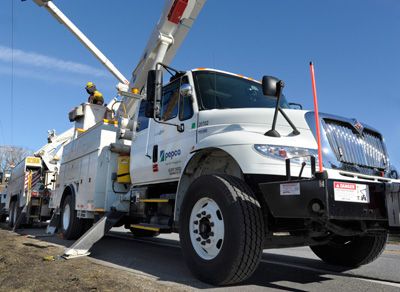Selling Safety to Utility Fleet Drivers
Despite the ubiquity of technology in almost everyone’s world today, drivers may resent the introduction of a GPS or telematics system by company management if they feel the technology is going to be used to spy on them. But explaining that these systems can improve safety, enhance driving skills and even reduce paperwork can go a long way to getting driver buy-in, said several fleet managers and industry executives.
Pacific Gas and Electric already had a fleet management system in place, but the company decided to look to technology as a way of improving driver safety and performance. In particular, they wanted to test telematics systems that fed performance data back to operations. Before doing that, however, fleet representatives first met with the union drivers and explained that the systems were being designed to improve their driving, not to discipline them.
“Drivers are always concerned about Big Brother and being disciplined for their behavior,” said David Meisel, senior director of transportation and aviation services for the San Francisco-based utility. “We explained that this is for their safety, to improve their driving so they can be safer drivers.”
The utility giant tested three systems that featured an in-cab coach, either a tone or voice that alerted the drivers when they exceeded some preset parameter. The test was a success, Meisel said. Drivers cut their speeding by 90 percent and their unsafe actions by 80 percent. As a result, the company is rolling out the system to 1,000 more units.
“Folks took it for what it was: a way to improve safety. It’s hard to say becoming a safer driver is a bad idea,” Meisel said.
Union drivers at Tanner Electric Cooperative in North Bend, Wash., were wary that a system from GPS Insight would be used to spy on them, but again, safety was a big selling point, said Jim Anderson, manager of operations and engineering. The co-op has remote locations, including one crew on an island in Puget Sound, and the ability to quickly locate units in emergencies is crucial.
“Once it was explained like that, they accepted it. And they’re doing very well with it,” Anderson said.
Keep Drivers Involved
It’s important to keep drivers updated about their performance and reward good driving behavior, said Frank Cottone, group manager of support services at Pepco in Washington, D.C. In 2013, the company started a program to cut vehicle idling using data collected from their Telogis onboard system. Cottone said Pepco shares the results – positive or negative – each month so that drivers can see where they stand compared with other drivers. Cottone credits the program for reducing unnecessary idling by 19 percent.
“Although some drivers still had privacy concerns, we diminished those concerns with constant communications about the program and by keeping our employees safe,” Cottone said.
Today’s technologies can benefit drivers through better communication, reduced paperwork and a more accurate accounting of their day, noted Ryan Driscoll, marketing director for Scottsdale, Ariz.-based GPS Insight. Even something as simple as knowing which vehicle is closest to the next job helps the driver.
“It means smarter allocation of the driver’s work,” he said.
The pervasiveness of tablets, smartphones and onboard technologies is connecting the worker with the employer and the employer’s mission, and that can make drivers more accepting of change, said Tim Taylor, chief success officer for Telogis.
“Excellent companies have something dynamic in their culture, a vibrant culture that they share with the workers,” he said. “These systems can connect the worker with this culture. It spreads accountability and responsibility [and] connects the workers with the mission of the company.”
About the Author: Jim Galligan has been covering the commercial truck transportation sector for more than 30 years and has extensive experience covering the utility fleet market. In addition to writing and editing for magazines, his background also includes writing for daily newspapers, trade associations and corporations.
*****
Sidebar: Survey Says
The use of GPS and/or telematics systems is helping fleets cut costs, improve operations and increase productivity, according to a study by management and research firm ARI.
By far, most fleets – 92 percent – report they are using the data from these systems to monitor speeding, ARI reported in its 2014 Utility Fleet Benchmark Study. The next two most common uses for these technologies are to monitor vehicle utilization (77 percent of the responding fleets) and for dispatching (69 percent). Fleets also are using the systems to plan routes and capture odometer readings (46 percent each), capture engine hours (39 percent), monitor hard braking and diagnose engines (31 percent each) and monitor hard cornering (15 percent).
With these technologies, 77 percent of fleets said they reduced vehicle idle time and 69 percent said they saw improved driver behavior. Other gains included decreased transit times, increased driver productivity and increased vehicle utilization (31 percent each), improved preventive maintenance interval accuracy (23 percent) and reduced accident rates (15 percent).



